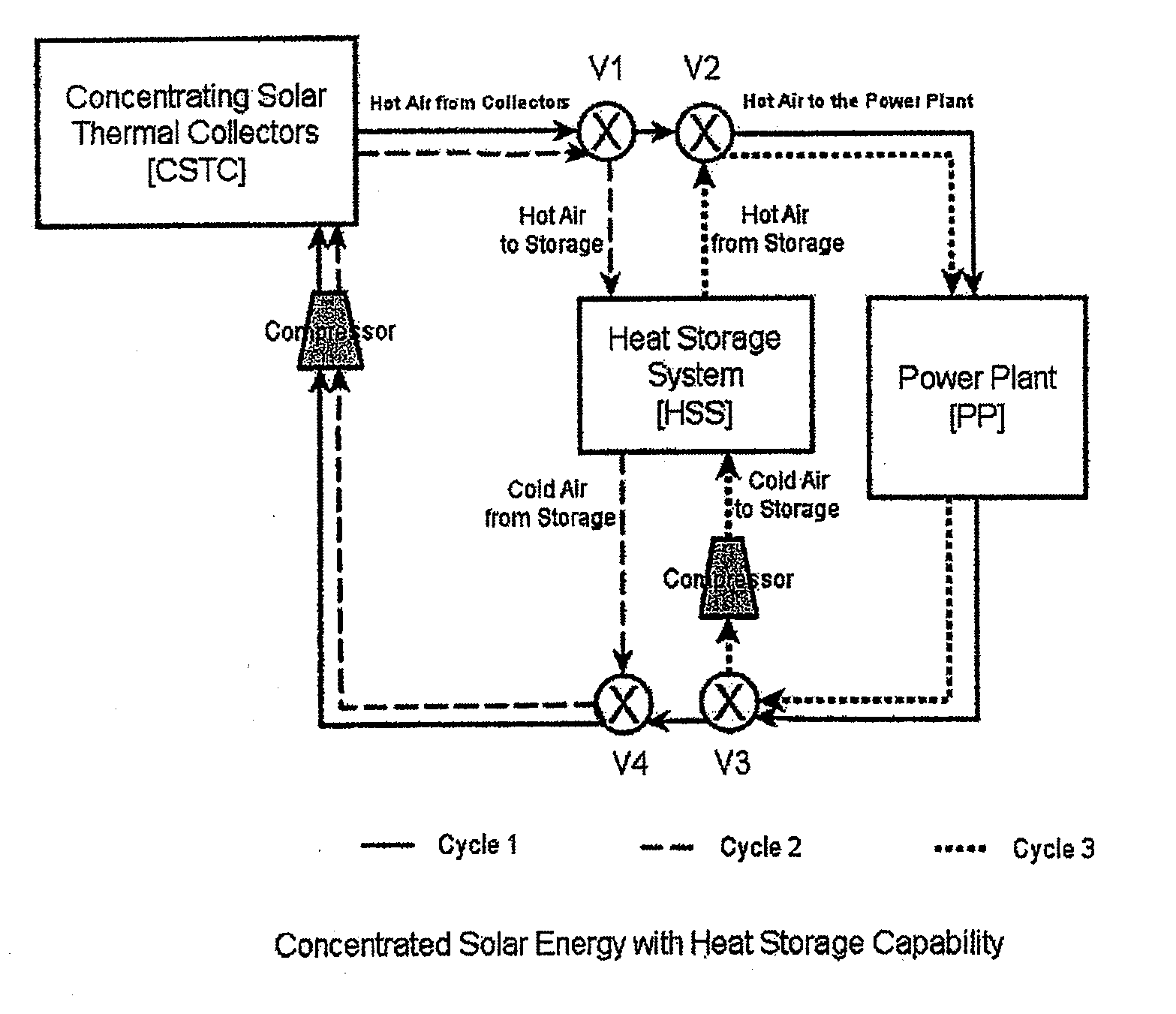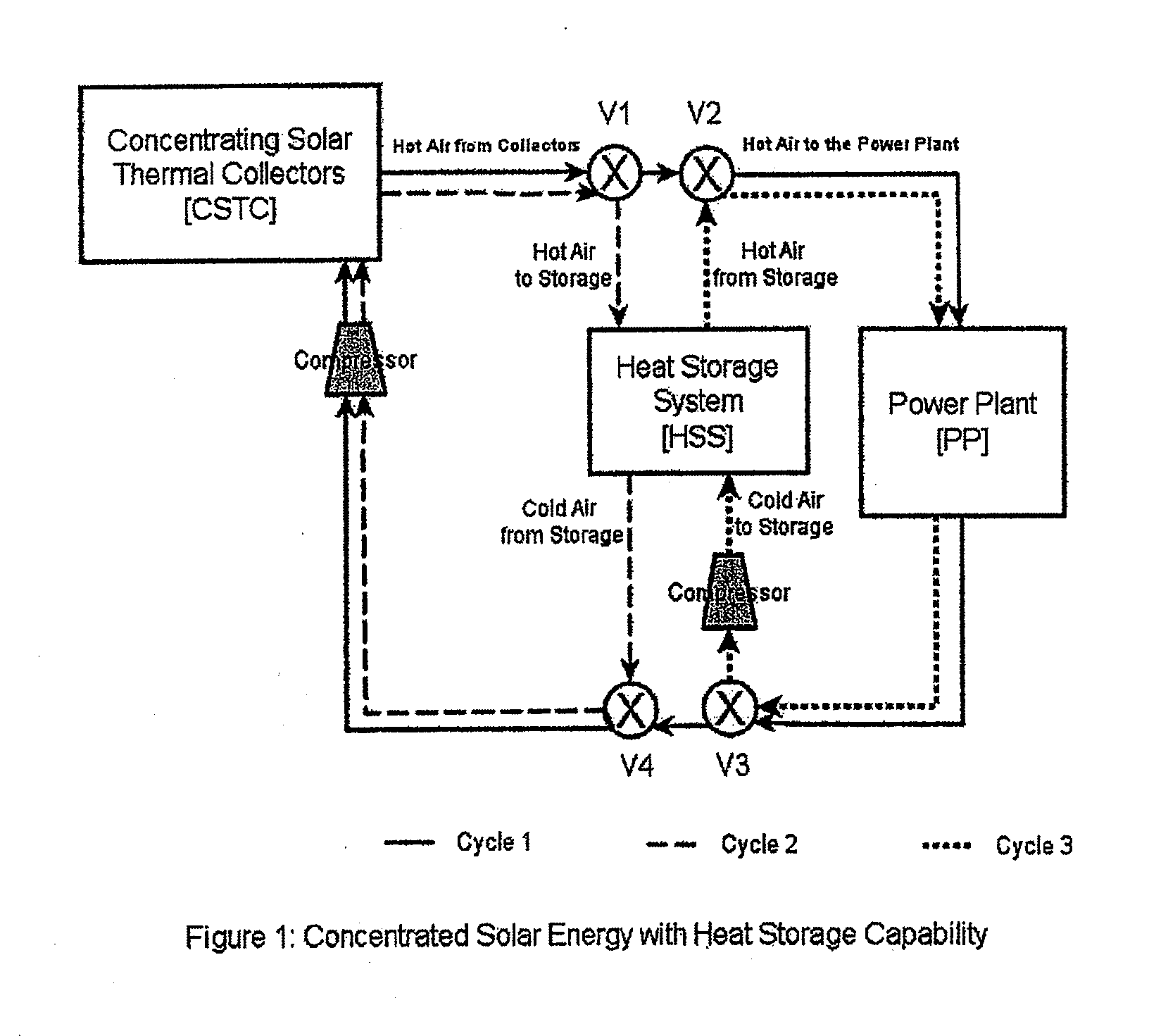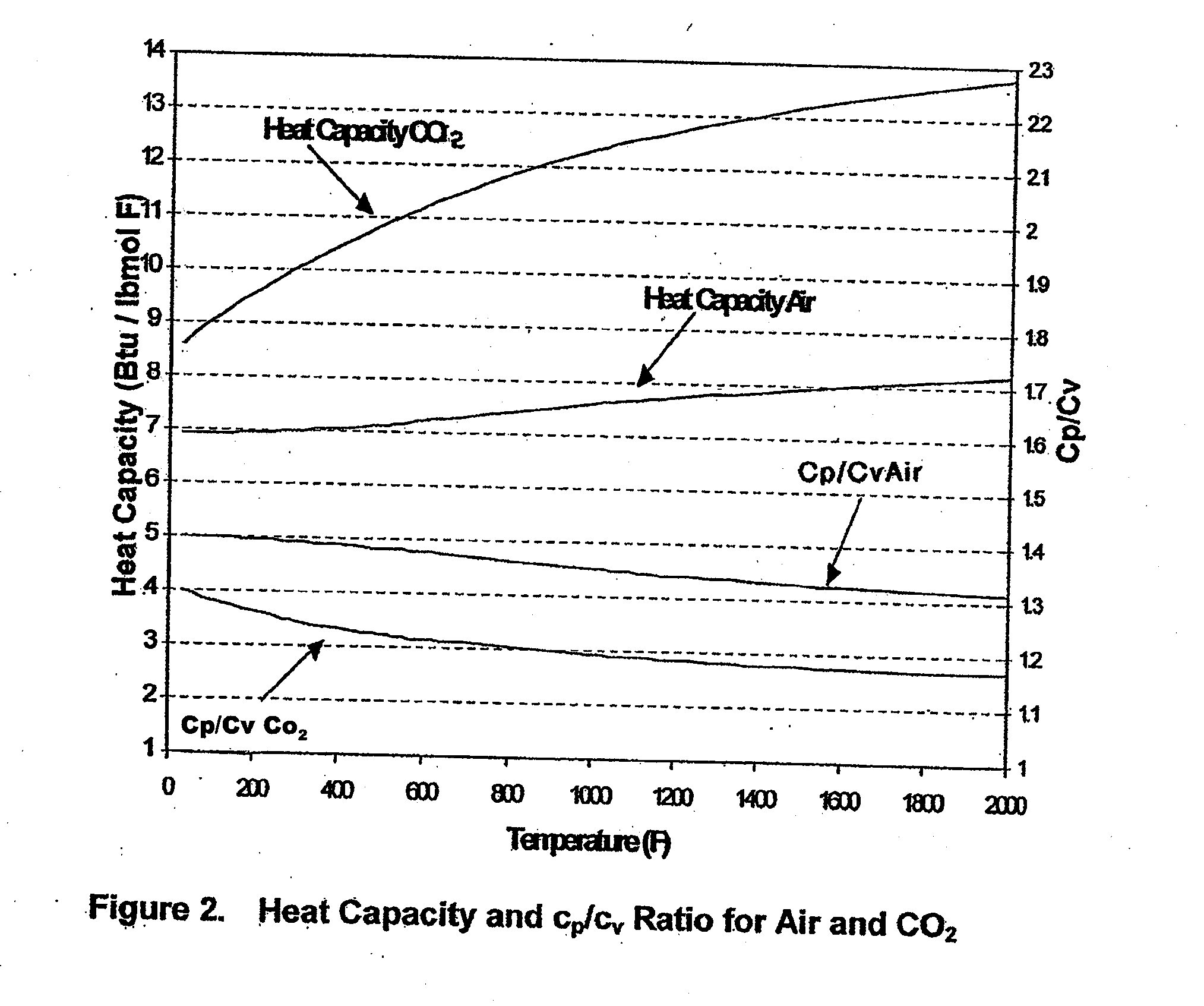Solar power plant and method and/or system of storing energy in a concentrated solar power plant
a solar power plant and concentrated technology, applied in steam engine plants, machines/engines, propulsion parts, etc., can solve the problems of the rest of the power plant becoming extremely expensive to operate at such high temperatures, and achieve the effects of short heating time, low pressure drop, and high thermal conductivity
- Summary
- Abstract
- Description
- Claims
- Application Information
AI Technical Summary
Benefits of technology
Problems solved by technology
Method used
Image
Examples
example 1
[0066]The first example illustrates a concentrating solar power plant for supplying intermediate load and will be described with reference to Tables 1 to 4. Consider the example of a concentrating solar power plant of 100 MWe rated capacity built in a sunny desert region. The total plant is not dealt with. Instead, only the elements related to heat storage are considered. The results for both air and CO2 as heat transfer medium (see Table 2) are, however, provided. It is further assumed that the power plant PP is designed to deliver 13 hours a day at a guaranteed capacity of 100 MWe (see Table 1). For purposes of control, the steam power plant PP is designed for 150 MWe to allow for fluctuations in demand and the higher output in the summer months. On the other hand, the total daily output is limited by the size of the solar thermal collectors of the system CSTC and heat storage capacity of the system HSS. As in any other storage system, there are design considerations which strongl...
example 2
[0074]The second example illustrates a concentrating solar power plant to supply to a grid with instantaneously dispatchable electricity in order to compensate for rapid changes in the load. The grid faces large changes in demand during short periods. New alternative energy sources such as wind and solar cells have introduced a new variability to the grid, as they are not constant and vary with the time of the day and the weather. While energy storage for them is feasible, available storage methods (batteries, compressed air, etc.) have a cost of above 20 cents / kWh stored, a factor of 10 higher than the method and system described herein, and energy losses of 20-25%. Using the invention, the cost of the storage is less than 2 cents / kWh and the energy losses are less then 5%. For example, in a year, 7 hours of storage a day provide 2555 hours of stored electricity. If we apply a capital charge of 10% per year, this gives $40-42 per year or about 1.6 cents / kWh. Even at double the inve...
PUM
 Login to View More
Login to View More Abstract
Description
Claims
Application Information
 Login to View More
Login to View More - R&D
- Intellectual Property
- Life Sciences
- Materials
- Tech Scout
- Unparalleled Data Quality
- Higher Quality Content
- 60% Fewer Hallucinations
Browse by: Latest US Patents, China's latest patents, Technical Efficacy Thesaurus, Application Domain, Technology Topic, Popular Technical Reports.
© 2025 PatSnap. All rights reserved.Legal|Privacy policy|Modern Slavery Act Transparency Statement|Sitemap|About US| Contact US: help@patsnap.com



